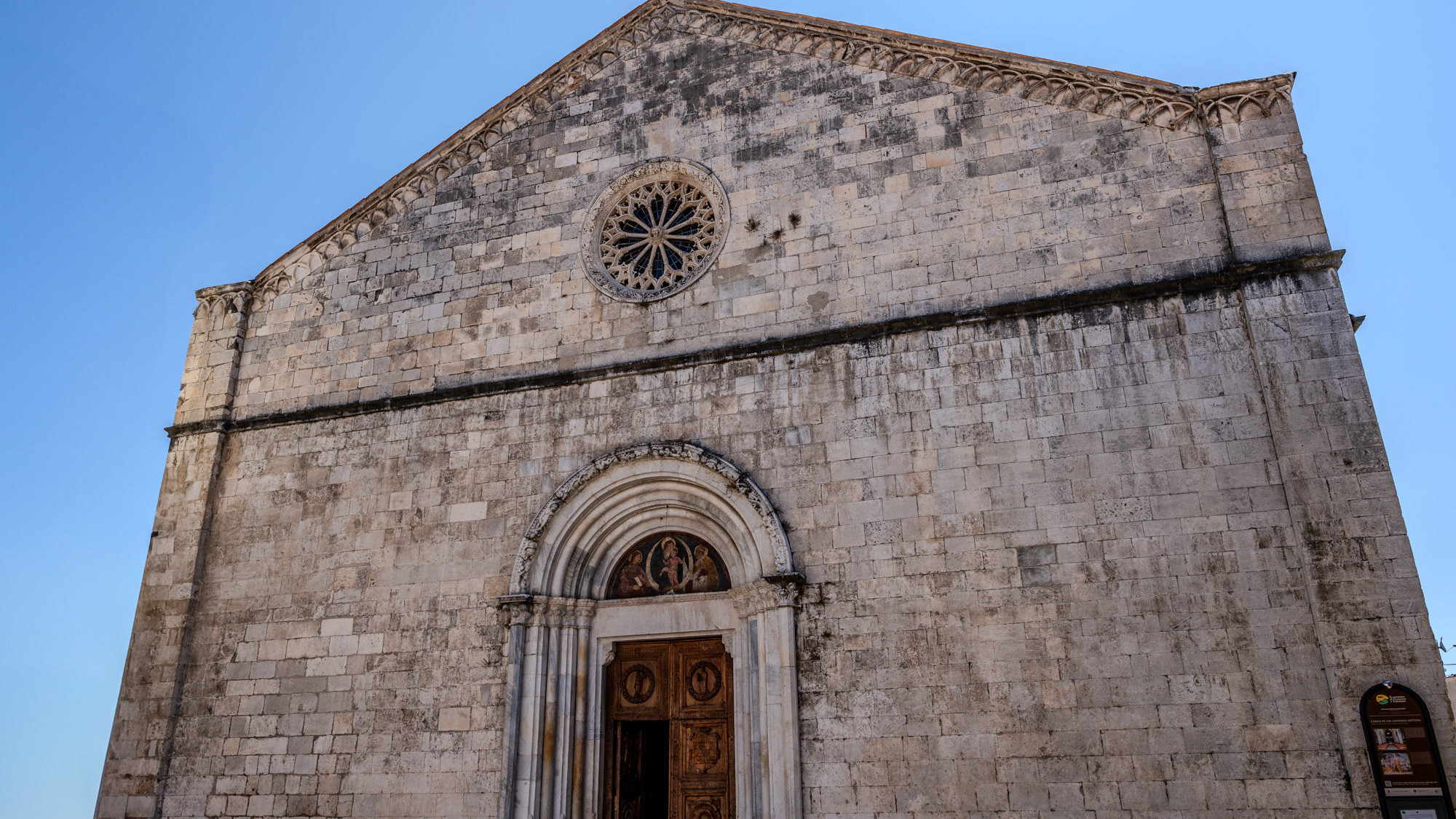Caporciano (AQ) S. Maria di Centurelli
2018
The church is located in the fork between the tratturo L'Aquila-Foggia and the tratturo Centurelle-Montesecco, making it a strategic structure in the period in which transhumance played a fundamental role in the economy of southern Italy.
You may also like

2024
Celano. Church of St. John the Baptist
Begun in the 13th century, it was completed in the 15th century. The rose window has the head of the Baptist in the center. The three internal naves are divided by octagonal pillars

2024
Santa Maria di Basciano. Church of S. M. in Porto Lungo
The Church of S. Maria a Porto Lungo is of notable artistic interest, dating back to the 14th century and, built on an ancient pagan temple, is in Romanesque style.

2025
Crecchio. The Ducal Castle De Riseis-D'Aragona
The castle is composed of four corner towers that enclose as many buildings. It is surrounded by a perimeter of walls that also enclose a garden.
2022
Abruzzo, Italy. Spectacular sunrise.

2023
Fara San Martino. The Gorges of San Martino
the Gole di San Martino opens with a narrow passage from the high rocky walls on the eastern slope of the Maiella, just outside the town of Fara. This is the beginning of the gorge-like valley that leads to the highest peak of the Maiella, Monte Amaro (2793 m), and includes the wildest territories of the entire massif with a 14 km long route and a difference in height of 2300 m . It can be divided into three parts: the Valle di S. Spirito, the Valle di Macchia Lunga and the Val Cannella. The latter ends with a glacial cirque in the center of which is the Manzini refuge. According to popular tradition, these suggestive gorges, just 2 m wide and about 30 m long, were opened by San Martino with the strength of his arms to allow the people of Fares to access the high pastures of the Majella more quickly. After walking a few meters, you can see the monastery of San Martino in Valle which an archaeological excavation has recently brought to light. In reality, this remarkable scenario was produced by the erosive and incessant action of the torrential waters coming from the melting of the surrounding snowfields during the Quaternary, in particular during the glaciations. With an evident franapoggio stratification that highlights the oldest terms as you go up, the oldest rocks of the Maiella emerge here, represented by beige-hazelnut platform limestones dating back to the lower Cretaceous. They contain fossil remains of algae and benthic foraminifera. Near the monastery, it is possible to observe an outcrop full of rudists, lamellibranchs who build cliffs now extinct but clearly visible in Maiella on Cima Murelle.

2009
Scanno (AQ)
Scanno (Scannë in Abruzzo) is an Italian town of 1 883 inhabitants located in the province of L'Aquila, in Abruzzo. The municipal territory, surrounded by the Marsicani Mountains, is partly included within the borders of the National Park of Abruzzo, Lazio and Molise and is in turn part of the Peligna mountain community. It is an important winter and summer resort and is part of the club The most beautiful villages in Italy. In the surroundings there are the homonymous lake, which however belongs for three quarters to the municipality of Villalago, the ski resorts of Passo Godi and Monte Rotondo, the plateaus of Monte Greco and Lake Pantaniello, as well as the natural reserve of the Sagittario Gorges. Scanno is also known as the City of Photographers; a place much appreciated by many Italian and foreign authors. Throughout the twentieth century, its unmistakable views and its people were the subjects of many famous shots taken by Hilde Lotz-Bauer, Henri Cartier-Bresson, Mario Giacomelli, Renzo Tortelli, Gianni Berengo Gardin, Ferdinando Scianna, Mario Cresci and many others . In 1964 it was a photograph taken in Scanno by Mario Giacomelli that became part of the prestigious collection of photographic works of the Museum of Modern Art in New York. This image is known as The Scanno Boy, or Scanno Boy.
2022
Lanciano. Seat of the Eucharistic Miracle
The church of S. Francesco or sanctuary of the Eucharistic Miracle is annexed to the homonymous convent of the Friars Conventual. It contains the famous relics of the Eucharistic miracle of Lanciano.
2023
Scanno. The Church of San Rocco
The Church of San Rocco, known as the Madonna del Carmine is located in Scanno. It is also called the Madonna del Carmine, because since 1784 it has been the seat of a confraternity of the same name

2025
Crecchio. Parish Church of the Most Holy Savior
The church has a beautiful baroque brick-clad facade, with a portal surmounted by a broken tympanum and a rectangular window above, and is crowned by a circular tympanum with an oculus.

2017
Monte Amaro
